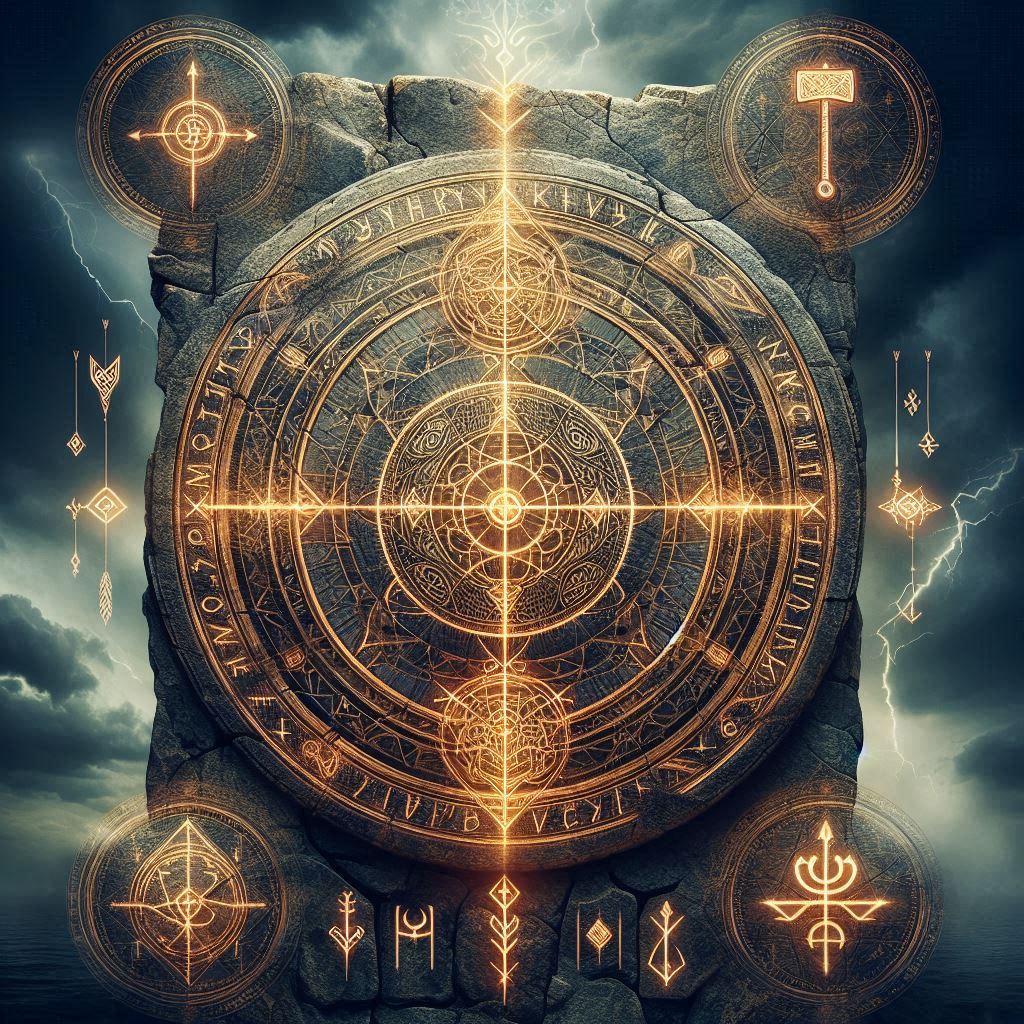
The Meaning Behind Viking Symbols: From Mjölnir to Vegvisir
Karl FinnbogasonShare
The Meaning Behind Viking Symbols: From Mjölnir to Vegvisir
Viking culture is rich with symbols that held deep spiritual and practical significance. These symbols were often inscribed on weapons, jewelry, and rune stones, representing the beliefs, protection, and strength of the Norse people. Among the most famous Viking symbols are Mjölnir, Vegvisir, Valknut, Aegishjalmur, and Yggdrasil. Each of these symbols carries a unique meaning and continues to inspire modern art, fashion, and mythology enthusiasts.
Mjölnir: The Hammer of Thor
One of the most iconic Viking symbols is Mjölnir, the mighty hammer of Thor, the Norse god of thunder. According to mythology, Mjölnir was a powerful weapon crafted by the dwarven brothers Sindri and Brokkr. It was known for its ability to summon lightning, destroy enemies, and always return to Thor when thrown.
Mjölnir was also a symbol of protection and blessings. Vikings wore Mjölnir amulets to invoke Thor's strength and safeguard themselves from harm. Even today, Mjölnir remains a widely recognized emblem of Norse heritage and resilience.
Vegvisir: The Viking Compass
Vegvisir, often referred to as the "Viking compass," is a runic symbol associated with guidance and navigation. Its name translates to "That Which Shows the Way." According to Icelandic grimoires, Vegvisir was believed to help travelers find their way through rough weather and unknown terrain.
Though there is no concrete evidence that Vegvisir was used by Viking-age Scandinavians, it has become a powerful symbol of direction and perseverance in modern Viking and Norse-inspired cultures. Many people wear Vegvisir tattoos or pendants as a reminder to stay on their path and navigate life’s challenges with confidence.
Valknut: The Symbol of the Fallen Warriors
The Valknut, a symbol consisting of three interlocking triangles, is strongly associated with Odin, the Allfather of Norse mythology. It is often found on ancient rune stones and burial sites, signifying a connection between life and death.
Scholars believe that the Valknut represents Odin’s power to bind and unbind warriors' souls, leading them to Valhalla—the great hall where fallen warriors prepare for Ragnarok. In modern times, the Valknut is worn as a tribute to Norse heritage, warrior spirit, and Odin’s wisdom.
Aegishjalmur: The Helm of Awe
Aegishjalmur, or the Helm of Awe, is a mystical symbol believed to provide protection and induce fear in one's enemies. It consists of eight rune-like arms radiating from a central point, resembling a spoked wheel.
According to Norse legends, warriors would paint or carve Aegishjalmur onto their foreheads or shields before battle to invoke an invincible aura. Today, it is a popular design for tattoos and jewelry, symbolizing courage, resilience, and inner strength.
Yggdrasil: The World Tree
Yggdrasil, the immense World Tree, is one of the most profound symbols in Norse mythology. It represents the interconnectedness of the nine realms, including Asgard (home of the gods), Midgard (the human world), and Helheim (the underworld).
This cosmic tree is said to sustain the universe, with its roots extending deep into the earth and its branches reaching into the heavens. Yggdrasil symbolizes wisdom, growth, and the eternal cycle of life and death. Many Viking enthusiasts wear Yggdrasil pendants as a reminder of the interconnectedness of all things.
The Legacy of Viking Symbols
The symbols of the Vikings were more than mere decorations; they were powerful expressions of faith, strength, and destiny. Today, these symbols continue to inspire artists, designers, and history enthusiasts who seek to connect with the fierce and adventurous spirit of the Norse people.
From Mjölnir’s protective power to the guiding force of Vegvisir, Viking symbols remain an integral part of Norse heritage and modern mythology. Whether worn as jewelry, tattooed on the skin, or incorporated into artwork and apparel, these ancient emblems continue to resonate with those who admire Viking history and culture.
